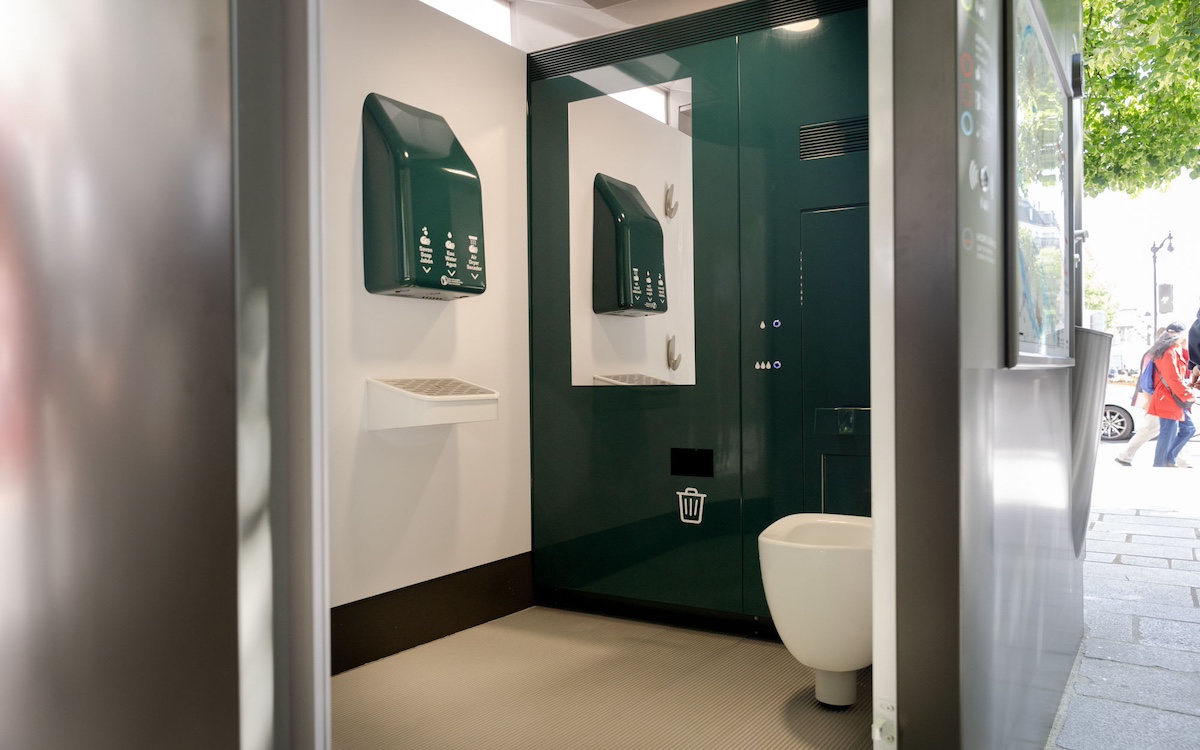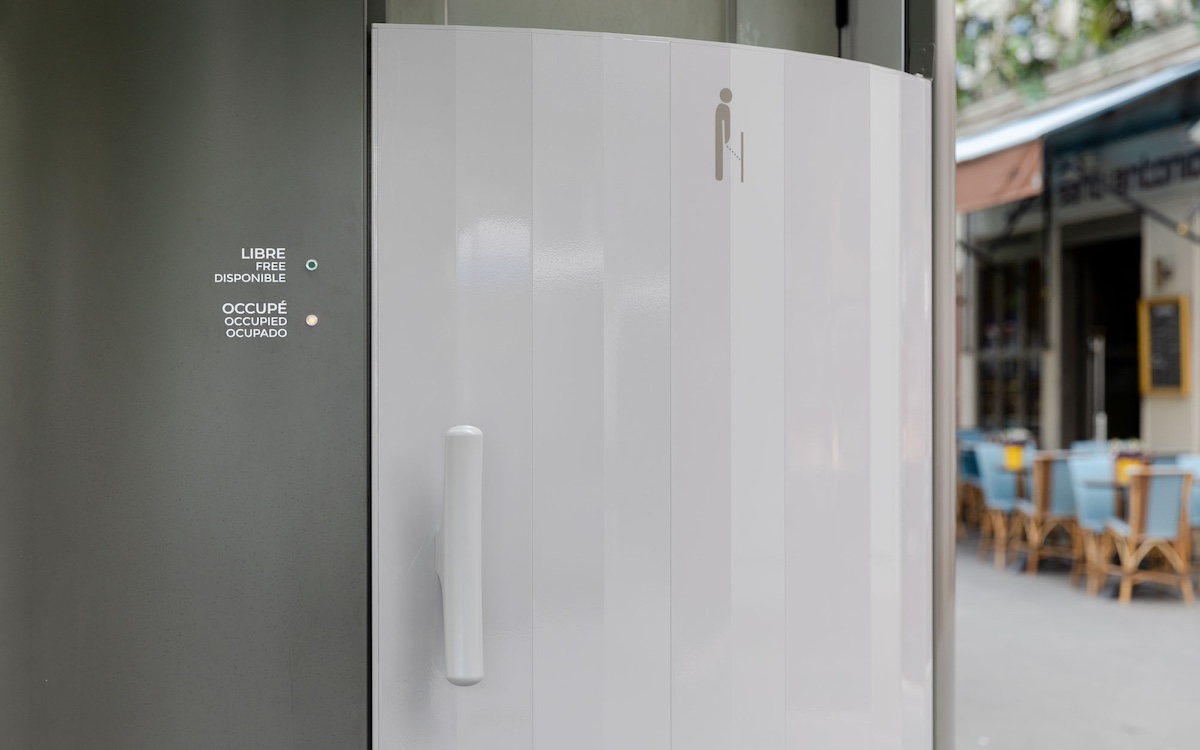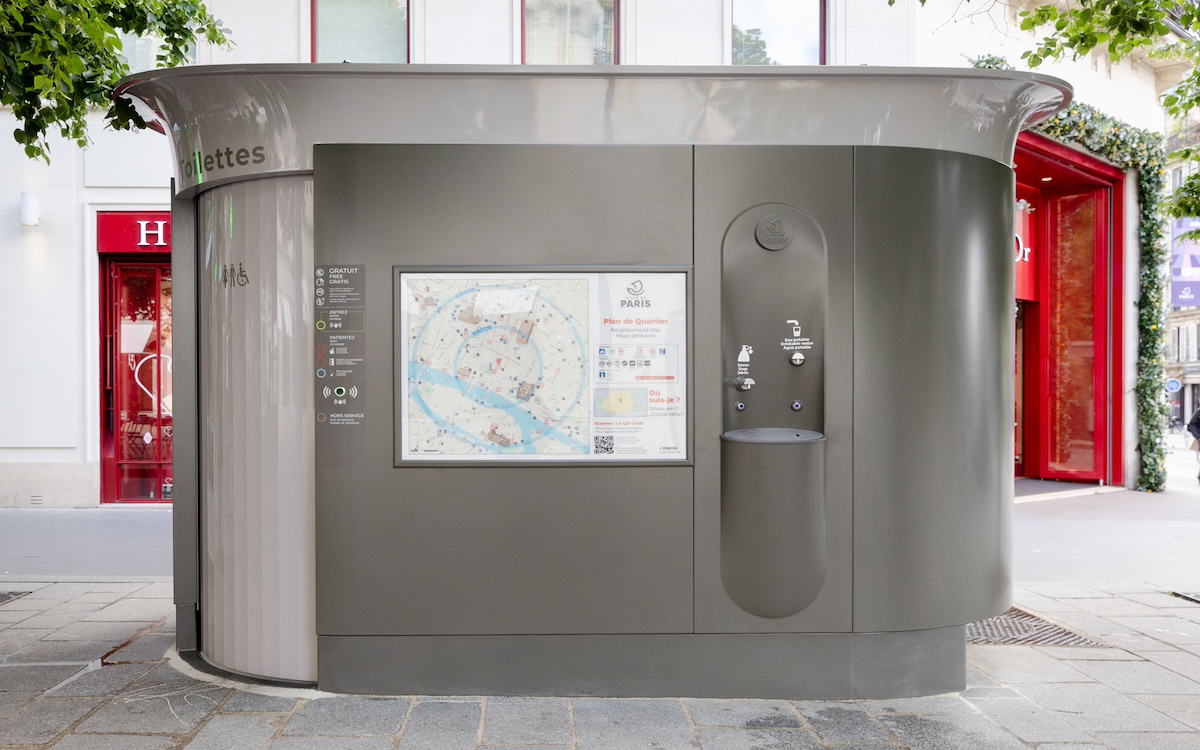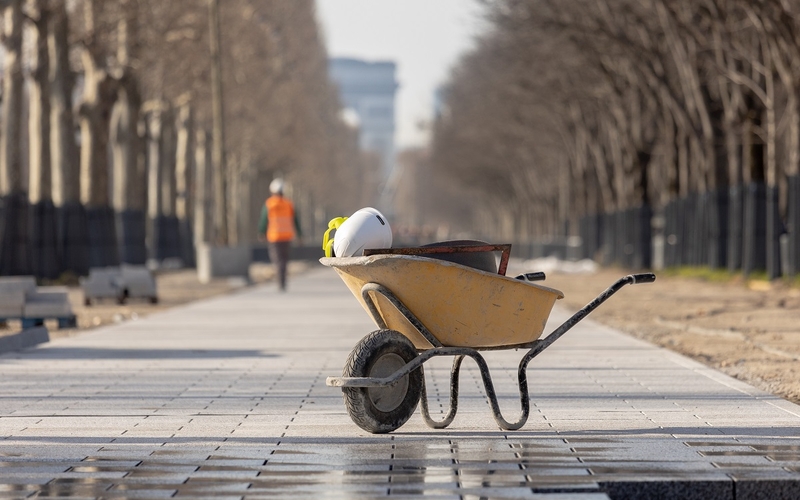Content
Cette page est aussi disponible en français
The City of Paris is deploying a new generation of public toilets in the streets of the capital. More comfortable and environmentally-friendly, they are designed and assembled in France by JCDecaux. The operation also improves accessibility to this free service.
Did you know that Paris is home to the world's leading network of self-maintaining public toilets called "sanisettes". To further improve this service for Parisians and tourists, the capital and its partner JCDecaux are deploying 435 new sanitary facilities that are cleaner, more comfortable and more environmentally-friendly.
Map of public toilets around Paris
New-generation WCs
These modernized cabins are particularly eco-friendly, with water consumption cut by almost two-thirds and electricity consumption by a third compared to current facilities. What's more, they are 100% powered by renewable electricity.
Maintenance staff will now move to and from facilities by cargo bike to ensure non-polluting operations. Repairs requiring the transport of spare parts will be carried out by electric vehicles.
All sanitary facilities currently being replaced are being renovated and recycled by the service provider. They will be put back into service as part of future operations, in France or abroad.
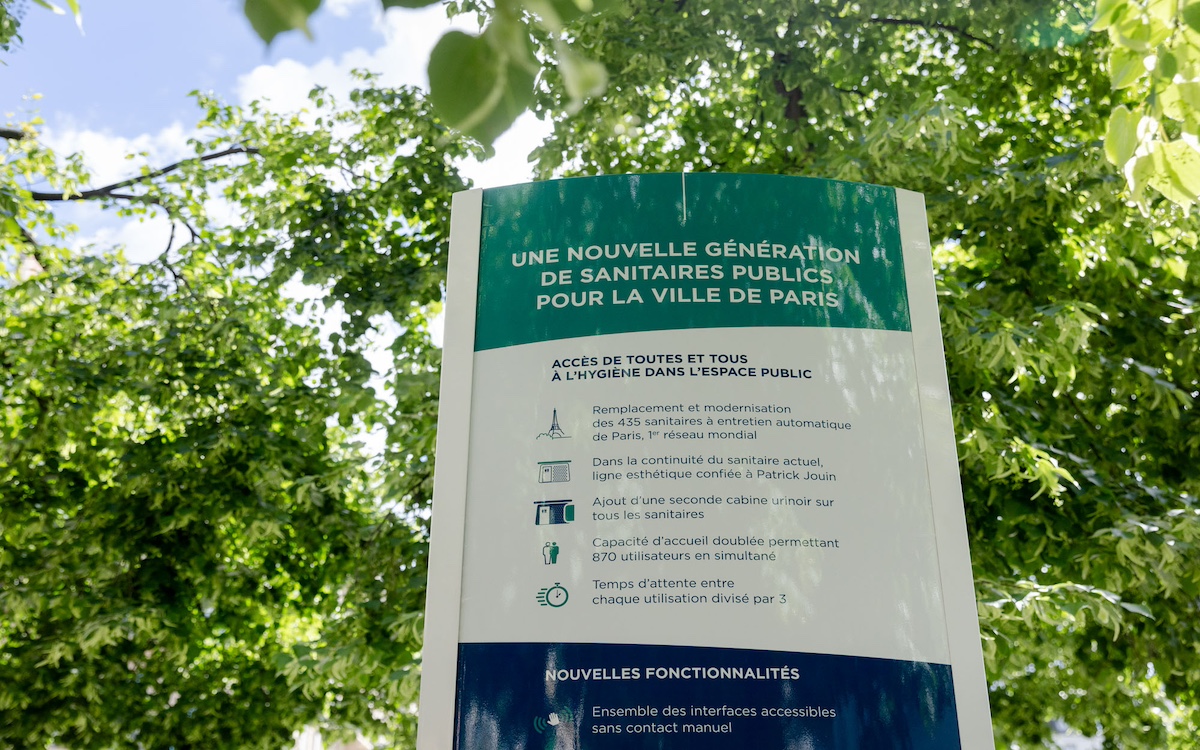
The aim of these new sanitary facilities is to guarantee access to hygiene in public spaces for all.
Credit
Jean-Baptiste Gurliat / Ville de Paris
Waiting times diminished
The new public toilets feature a large, accessible main cubicle and an external fountain with soap, as well as a second urinal cubicle. Another new feature is that all interfaces can be accessed without contact.
Waiting times between each use of the main cabin is now much faster, limited to just thirty seconds. A very short time during which the toilet is cleaned and disinfected.
The urinal cubicle is accessible with no waiting time, and is disinfected between each use.
The service provider will intervene, on average, three times a week on each sanitizer. Services include: supplying consumables (toilet paper, soap), cleaning, emptying garbage cans and repairing defective parts. External cleaning is also carried out once a week.
A design in keeping with Parisian aesthetics
JCDecaux has once again entrusted designer Patrick Jouin with the design of this new generation of toilets. Their silhouette is in line with existing models, making them easily identifiable and ensuring their seamless blend into the Parisian landscape.
For Jean-Charles Decaux, Chairman of the Executive Board and co-CEO of JCDecaux, "access to public toilets is essential to hygiene and human dignity. More than fifteen million people use them every year. Paris's new sanitary facilities have been designed with users in mind, as well as environmental progress. Patrick Jouin has modernized its shape, while respecting its core identity. These new toilets will provide the French capital with the world's most innovative, high-performance and high-capacity service."
What is the public toilet installation process?
The 435 sanitary units will be deployed from early 2024 to May 2025.
Around ten sanitary units are upgraded every week. They are placed evenly throughout Paris to maintain a high level of service per arrondissement.
Step-by-step installation
A sanitary facility is first closed to the public, and a construction site is set up around it. It will then be brought back into service some four to six weeks after closure, to enable the following phases to be carried out:
-
Enedis disconnects the power supply and places the connections on a "service pad";
-
removal of the old model by JCDecaux ;
-
installation of the new model by JCDecaux and preparation of new power and water supply
-
new electrical connection by Enedis ;
-
sanitary facility is put back into service by JCDecaux.
Sanitary facilities will be removed and installed at night to minimize disruption to traffic and pedestrians.
Schedule
An initial phase of around 150 sanitary facilities starts before the Olympic and Paralympic Games, from February to early July 2024.
The next 285 will be completed between September 2024 and May 2025.
This page presents City of Paris and network operators building sites (Eau de Paris, heating, electricity, gas, air conditioning, RATP, telecom operators, etc.), as well as private building sites on public spaces.
A little history
The very first public toilets were installed in 1981.
The installation of this facility was the subject of a deliberation by the Paris Council on December 15 and 16, 1980. 400 sanitary facilities were installed throughout the capital.
These JCDecaux sanisettes were installed between 1981 and 1986. The entrance fee was set at 1 franc (deliberation of the Paris City Council on October 20, 1981), and revenue collection was entrusted to the City of Paris's paid parking authority, with purposed staff.
The first sanisettes were opened to the public on November 10, 1981.
They were made free of charge in 2006.
The installation of this facility was the subject of a deliberation by the Paris Council on December 15 and 16, 1980. 400 sanitary facilities were installed throughout the capital.
These JCDecaux sanisettes were installed between 1981 and 1986. The entrance fee was set at 1 franc (deliberation of the Paris City Council on October 20, 1981), and revenue collection was entrusted to the City of Paris's paid parking authority, with purposed staff.
The first sanisettes were opened to the public on November 10, 1981.
They were made free of charge in 2006.
Keep up with Paris news
Every Friday, get all the latest Paris news delivered straight to your inbox. We'll tell you everything you need to know about the city's transport, its transformation, new projects, the Olympic Games and much more.
Default Confirmation Text
Settings Text Html
Settings Text Html
We want to hear from you!
Was this information useful to you?
Please note: we cannot reply via this form (please do not include any personal information).


